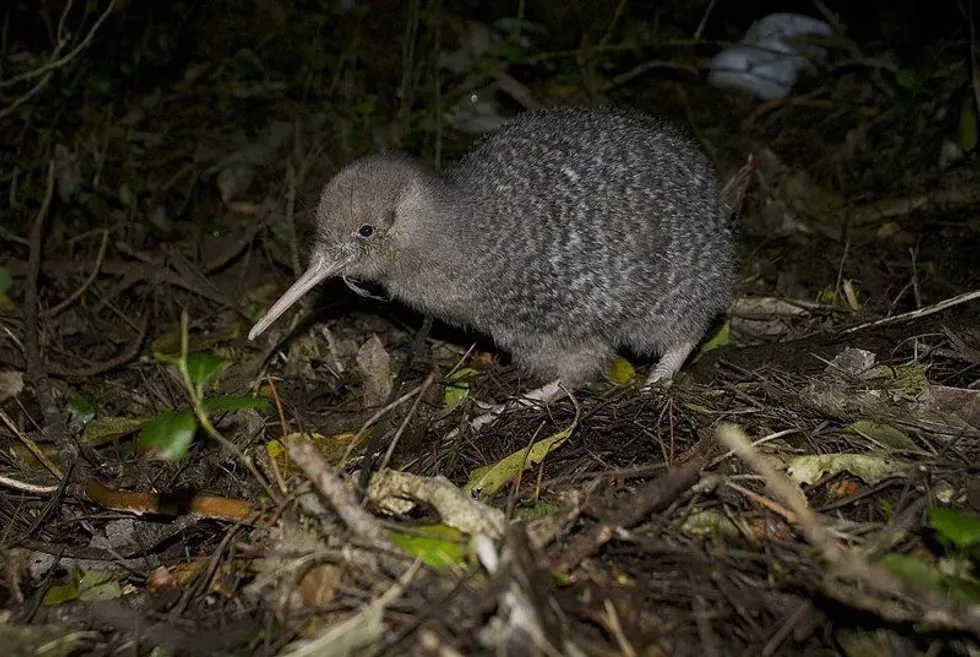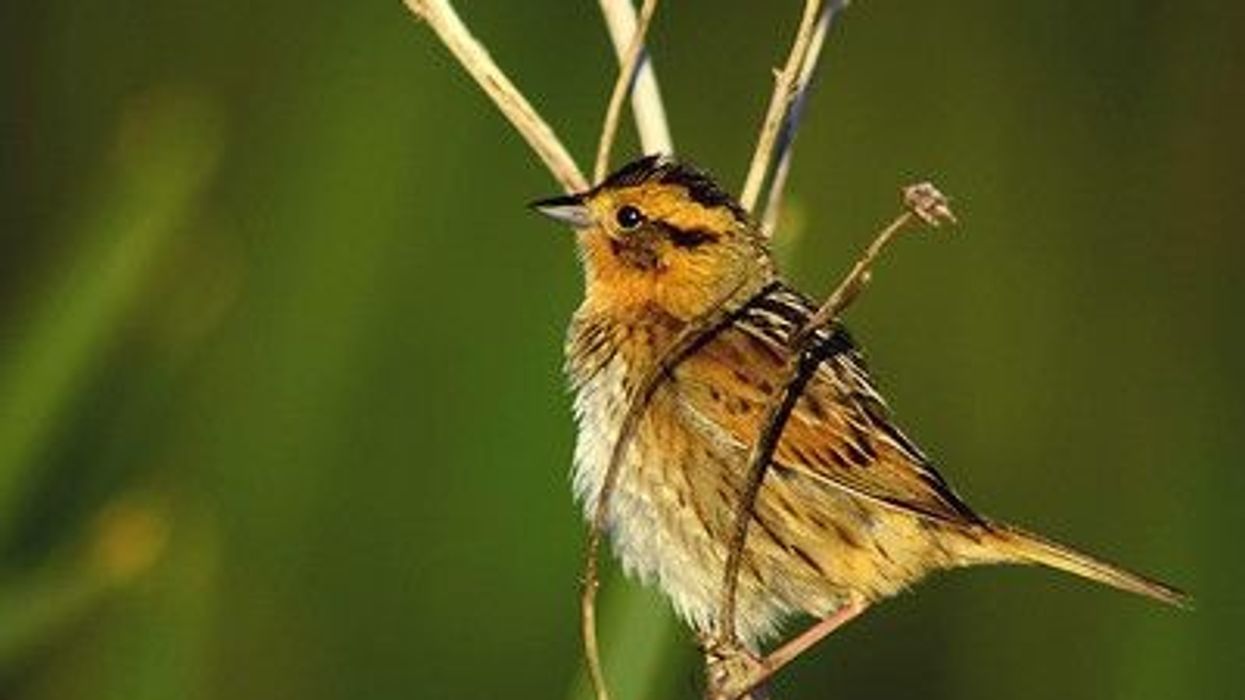The great spotted kiwi (Apteryx Haastii) is the largest kiwi bird found in New Zealand and one of the rarest birds in the world. They are also known as the kiwi roroa locally.
These kiwi birds are named so because of the 'kee-wee' sounds they make while vocalizing. In addition to that, the great spotted kiwi and little spotted kiwi are easily identifiable due to the spots on their feathers.
Due to the alarming decline in the population of the largest kiwi birds in the world, multiple conservation efforts have been implemented in New Zealand to preserve its population. One such conservation project has been set up in Lake Rotoiti in the South Island where these birds can find their natural habitat.
This bird species has a strong sense of smell and sound. They can smell their food from a short distance without even coming into contact with it. In addition to that, their beaks have sensitive nerve endings which alert them about the presence of any prey nearby.
Keep reading for more interesting facts about the great spotted kiwi! If you liked this article about the great spotted kiwi, also check out our other articles with amazing facts about the common snipe and Amsterdam albatross.
Great Spotted Kiwi Interesting Facts
What type of animal is a great spotted kiwi?
The great spotted kiwi (Apteryx haastii) is a type of kiwi bird.
What class of animal does a great spotted kiwi belong to?
The great spotted kiwi (Apteryx haastii) belongs to the Aves class of the Animalia kingdom.
How many great spotted kiwis are there in the world?
There are approximately 15,000 great spotted kiwis currently in the world. This was in sharp contrast to the great spotted kiwi population status of 22,000 individuals recorded in 1996. In comparison, there are over 1500 little spotted kiwis and this number is fortunately growing.
Where does a great spotted kiwi live?
The great spotted kiwi (Apteryx haastii) is endemic to New Zealand.
Compared to the north island brown kiwi which can only be found in the North Island in New Zealand, this bird is found in three areas, Northwest Nelson, Paparoa range, and the Arthur's Pass-Hurunui district in the Southern Alps.
The largest population of this species in New Zealand is found in Northwest Nelson, followed by the Paparoa range with the smallest population being situated in Arthur's Pass-Hurunui district in the Southern Alps.
They are also found on the South Island due to conservation projects.
What is a great spotted kiwi's habitat?
The great spotted kiwi prefers forest areas as their habitats. This kiwi is also found in scrublands, tussock grasslands on the mainland island, and even in subalpine habitats. This bird can be found at sea level to an elevation of 4921 ft (1500 m) in Northwest Nelson, Paparoa range, the Arthur's Pass-Hurunui district and the South Island.
Who do great spotted kiwis live with?
This kiwi does not exhibit much social behavior. They form mating pairs during the breeding season and may come together around trees that are bearing fruit for their food.
How long does a great spotted kiwi live?
The great spotted kiwi is known to live for 12-18 years while in captivity. In the wild, this kiwi can live up to 20 years.
How do they reproduce?
Great spotted kiwis mostly form monogamous pairs and lay an egg in the latter half of the year. They mostly lay one egg per clutch in each breeding season but may have more than one clutch.
The female kiwi lays one large egg which is white or green in color. Interestingly, the male kiwi incubates the egg throughout the day and the female bird incubates the egg at night.
What is their conservation status?
The International Union for Conservation of Nature (IUCN) has listed this species of kiwi as Vulnerable in its IUCN Red List based on the alarming rate of decline in the great spotted kiwi population status in New Zealand.
Great Spotted Kiwi Fun Facts
What do great spotted kiwis look like?
The color of the plumage of this kiwi can range from dark gray to light brown. They have horizontal white-colored bands across their body along with a long bill. The length of their bill falls within the range of 3.2-5.3 in (8.3-13.5 cm). It is curved in shape to help them grasp their food and keep out dust.
Their dark legs and toes are quite muscular as they rely on them for running around. Their claws have dark streaks on them. These birds have four toes with three toes facing forward while one is turned at the back. The female kiwi is larger in size than the male kiwi.

* Please note that this is an image of a little spotted kiwi. If you have an image of a great spotted kiwi please let us know at hello@kidadl.com.
How cute are they?
These birds are not conventionally cute but they are a rare bird that is difficult to spot. With their small, stout bodies and long beaks, the kiwi roroa (Apteryx haastii) is one of the most unique and popular birds around the world.
How do they communicate?
This kiwi species makes a variety of loud sounds depending on their actions. They are quite vocal after sunset during the egg-laying time.
The male birds make whistling sounds while the female bird makes a harsh call. They mostly call to each other for communication and during the breeding season. They also call to warn each other of imminent danger.
How big is a great spotted kiwi?
The average length of a kiwi roroa is 17.32-21.65 in (44 to 55 cm). An ostrich is almost thrice the size of this species of kiwi as it is approximately 66-72 in (168-183 cm) in size.
How fast can a great spotted kiwi fly?
Great spotted kiwis are one of the flightless birds of the world. They walk around on their strong, muscular legs and forage for food.
How much does a great spotted kiwi weigh?
The average weight of great spotted kiwi birds is 5.29-7.27 lb (2.4-3.3 kg).
What are the male and female names of the species?
Males and females of this kiwi species do not have unique names. They are referred to as a male or female great spotted kiwi.
What would you call a baby great spotted kiwi?
A baby great spotted kiwi is referred to as a great spotted kiwi chick.
What do they eat?
The great spotted kiwi primarily feeds on seasonal fruits and seeds. Their diet also consists of earthworms, beetles, and spiders.
Are they dangerous?
This kiwi species found in Northwest Nelson, Paparoa range, and Arthur's Pass-Hurunui district in the Southern Alps can be quite aggressive. Whenever they feel their territory being encroached upon by other kiwis, they immediately become aggressive in order to defend their territory. However, they are not known to attack human beings.
Would they make a good pet?
The great spotted kiwi would not make a good pet. These birds prefer their wild habitat and would not make very good pets. Their population has been steadily declining and they need to be taken into conservation projects instead of being kept as pets.
Did you know...
The Maori people are an ethnic group in New Zealand. They value kiwi birds as a part of their indigenous culture and refer to them as 'taonga'.
In comparison to the little spotted kiwi species, great spotted kiwi chicks live with their parents for more than a year. Little spotted kiwi chicks become independent and leave their nests two months after hatching.
What is unique about kiwi birds?
The great spotted kiwi species are flightless and their wings and tails are quite small compared to other flying birds. Their feathers are quite soft because of their absence of flight abilities.
These kiwis are also nocturnal and cannot see very well. They have developed a powerful sense of sound and can catch their prey based on the vibrations made by them. They also have a strong olfactory sense that allows them to smell very well.
What are the threats facing the great spotted kiwi?
These birds have faced a stark decline in their population due to the introduction of mammalian predators in their natural habitat. Cats and dogs along with ferrets and ermines have infiltrated the habitat of kiwis and have become their chief predators.
In captivity, these kiwis are also affected by different health issues such as bacterial or fungal diseases like pneumonia, tuberculosis, and bronchitis.
Here at Kidadl, we have carefully created lots of interesting family-friendly animal facts for everyone to discover! Learn more about some other birds from our great auk facts and purple sandpiper facts pages.
You can even occupy yourself at home by coloring in one of our free printable great spotted kiwi coloring pages.
* Please note that the main image is of a little spotted kiwi, not of a great spotted kiwi. If you have an image of a great spotted kiwi, please let us know at hello@kidadl.com










